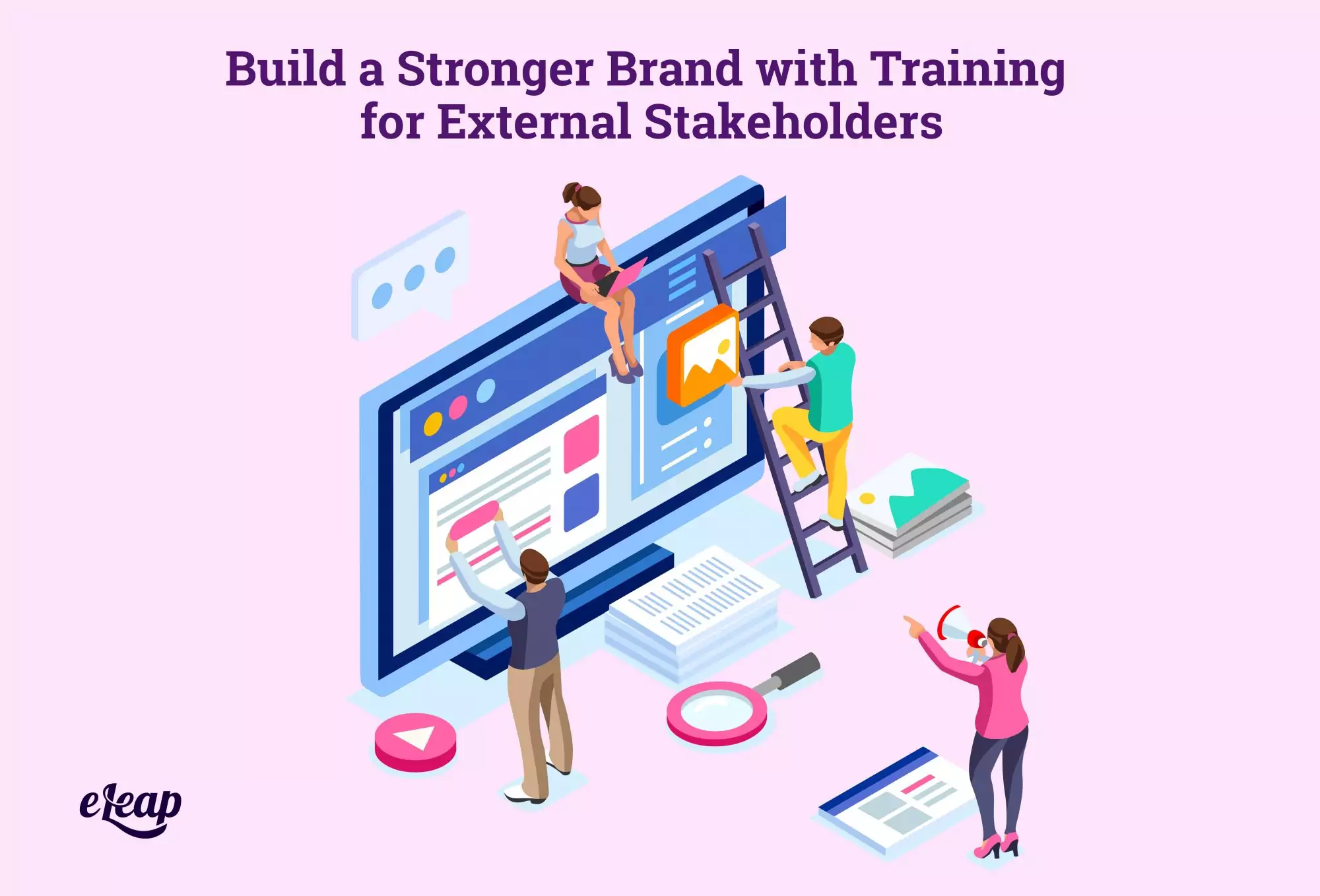Build a Stronger Brand with Training for External Stakeholders

Today, most organizations have in-house learning and development efforts. The vast majority of leaders understand the need for L&D and see the value of training their employees and managers. However, no business exists without the help of others outside the organization.
Manufacturers work with suppliers and distributors, as well as retailers. Software developers work with end-users. Every organization must work with vendors, suppliers, retailers, and other partners to connect with their audience. Training for these external stakeholders can have profound benefits and help you build a stronger, more resilient brand.

What Is Training for External Stakeholders?
You might be more familiar with this as extended enterprise training, but whether you call it that or training for external stakeholders, it all comes down to the same thing: external training for your partners that helps ensure your success, as well as theirs. It’s all about collaborative effort and mutual growth, relationship building, and enhancing brand awareness. Of course, that explanation probably doesn’t provide the clearest picture of how this all works, so let’s dig a bit deeper.
How Does External Training Work?
To understand how training for external stakeholders works, it’s important to have a better idea of the types that exist. You’ll find two primary types today – customer training and partner training. Each shares some similarities, but is ultimately unique.
Customer Training
Customer training is perhaps the most familiar option. This is training you provide to customers who purchase your products or services. It educates them on how to use a product or how a service benefits them. For instance, when a company purchases a new CRM, the vendor will often provide a modicum of training to get the customer’s team up to speed. Often, that team will then train others within the organization.
Partner Training
Partner training is a little bit different, but follows the same general premise. It’s really all about making sure that your partners understand your brand and the value of your product/service, and are able to portray it properly to end-users. For example, a paint manufacturer works with painting companies to help businesses and consumers. The manufacturer would provide training to the painting company’s staff on things like best practices for application and how to ensure success with minimal hassle. It’s all about ensuring business partners understand your offerings, enabling them to better communicate with end customers and represent your brand correctly.
Why Consider Training External Stakeholders?
With a better understanding of what this type of training entails, it’s time to turn our attention to the question of why you should consider it. Don’t you already have enough on your plate? Actually, training external stakeholders can offer some profound benefits that speak directly to your primary pain points and challenges, enabling you to build a stronger brand and capture more market share.
Recognition
How long does it take someone to remember your brand? You might think that first impressions are the most important (and they are vital), but the reality is that it can take up to seven impressions for someone to recall your brand (at least to recall it properly). External training helps reduce that burden and to stay at the top of your audience’s mind.
Accuracy
What is a brand but the perception of a company’s customers of its products or services and its team? The problem is that inconsistency within brand-customer interactions can lead to inaccurate perceptions that ultimately damage your brand and create an unwanted image. Training for external stakeholders helps ensure that your brand’s values and key messages are being communicated accurately at all times and that you are able to build an accurate brand image.
Consistency
How much stock would you put in a company with inconsistent messaging? Probably very little. And, if your partners are inconsistently communicating your brand message, you can expect end customers to look to your competition. With external training, you’re able to create consistent messaging and ensure that your partners stay on point. That consistency helps build a stronger brand, reinforce key values in the minds of end customers, and more.
Value
How frustrating is it for your partners to try to sell your products or services without a good understanding of them? How problematic is it for end customers to take your product and try to fit it into their lives without any sort of guidance? Training for external stakeholders can solve both of those challenges while offering greater value.
In turn, that strengthens your brand while also creating positive associations with your company’s name in the minds of your customers. Look at it this way: which is a customer more likely to value, the company that sells its software and then disappears, or the one that sticks around to show them how to use it to the best effect? The latter wins every time.
Help Your Partners Thrive
Training external stakeholders isn’t just about your business – it’s also about helping your partners grow and thrive. How much can training in your product or service help streamline their operations? How much would training help them clarify the sales message to end customers? Well-planned training provides your partners with key tools required to do their jobs more effectively.
The knock-on effect here is that as you help your partners thrive, you also create longer-lasting, stronger relationships. Those benefit both you and your partners over the long-term, ensuring mutual success and growth.
It Just Makes Sense
While much of the discussion around L&D rightfully revolves around in-house training, no company can afford to ignore the value of and need for training external stakeholders. Whether that’s teaching your customers the best way to use your product, highlighting for retailers how to market your products or services, or ensuring that strategic partners understand how to communicate your brand’s values and USP, training is the key to unlocking a vast world of benefits.
Have you worked with external stakeholders to provide them with training? What hurdles have you faced? What wins have you made? Share your story in the comments below.